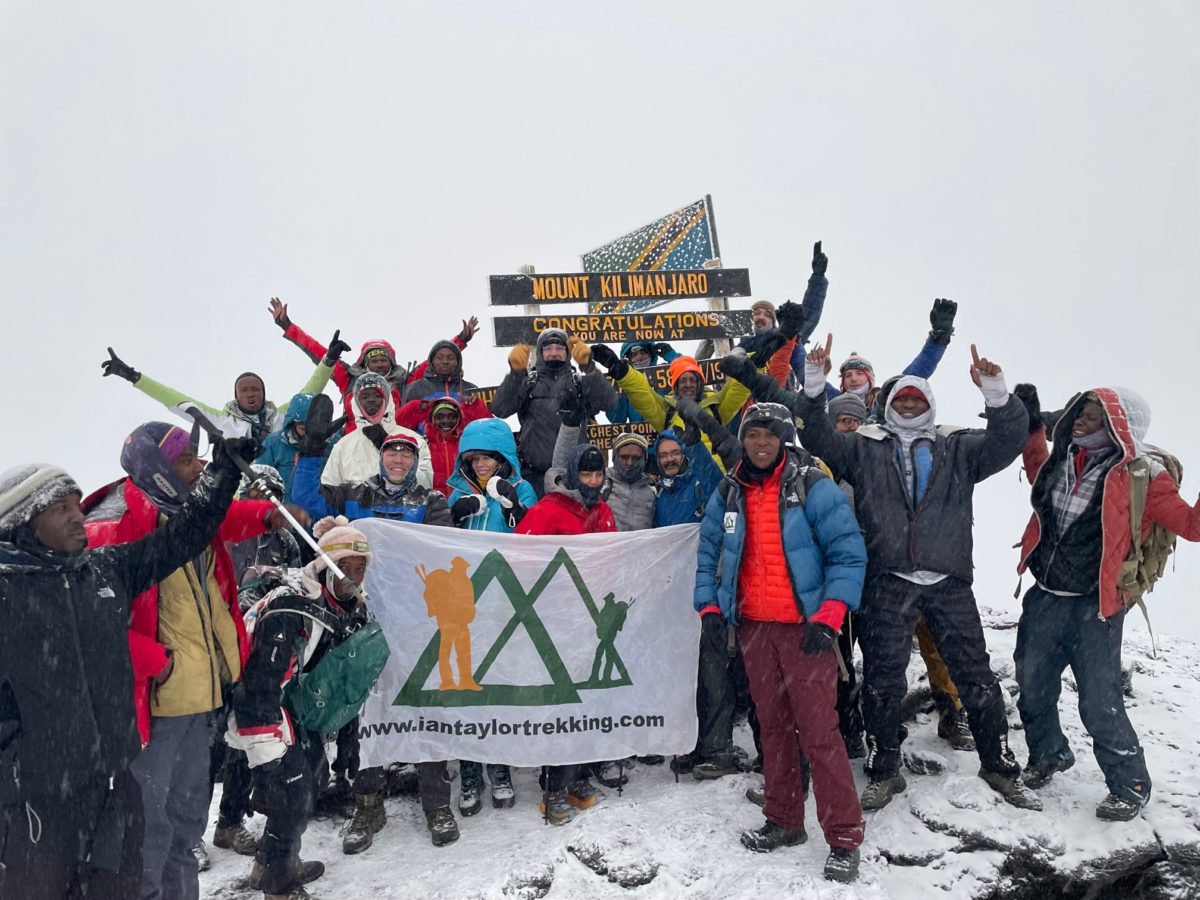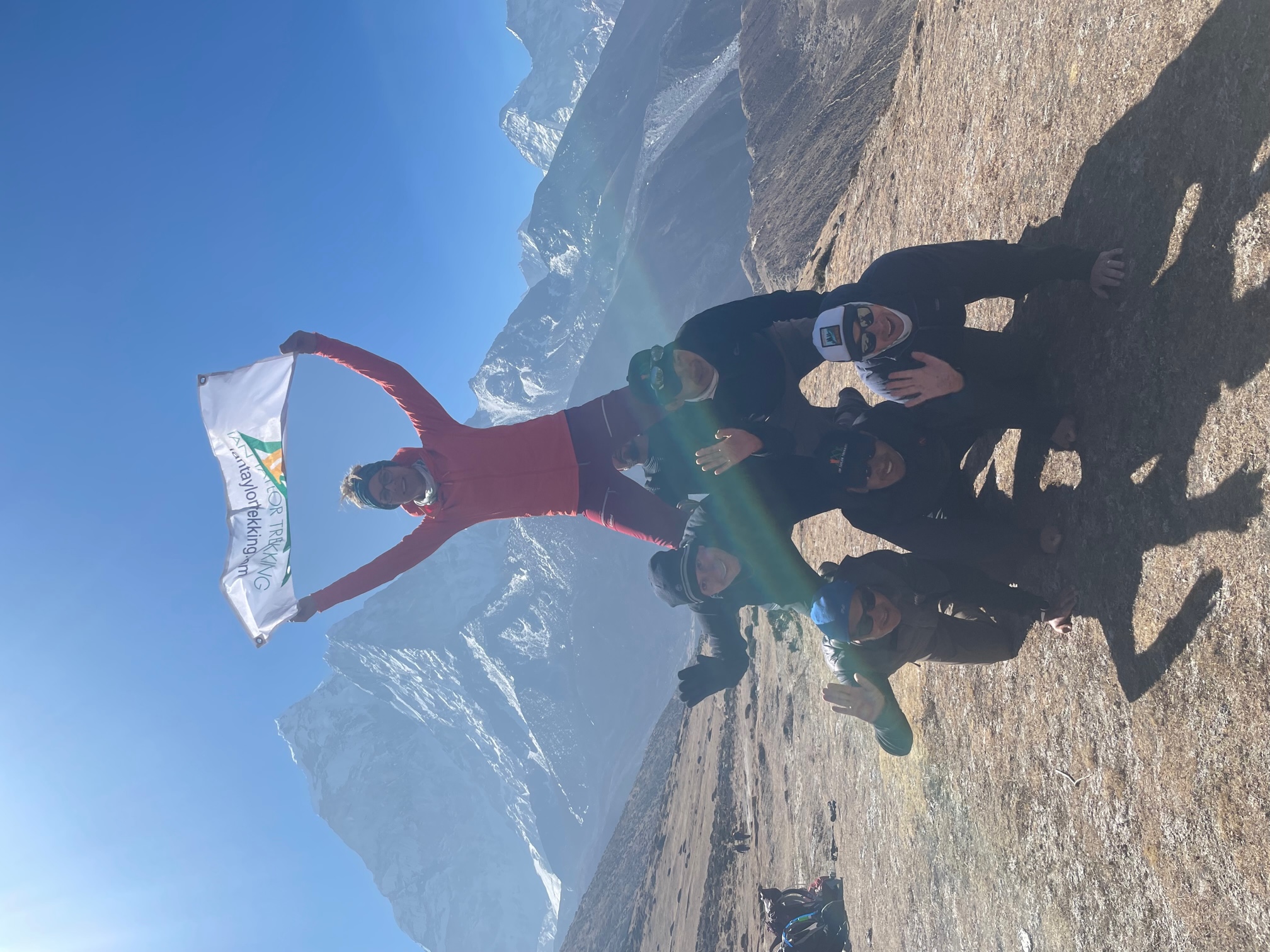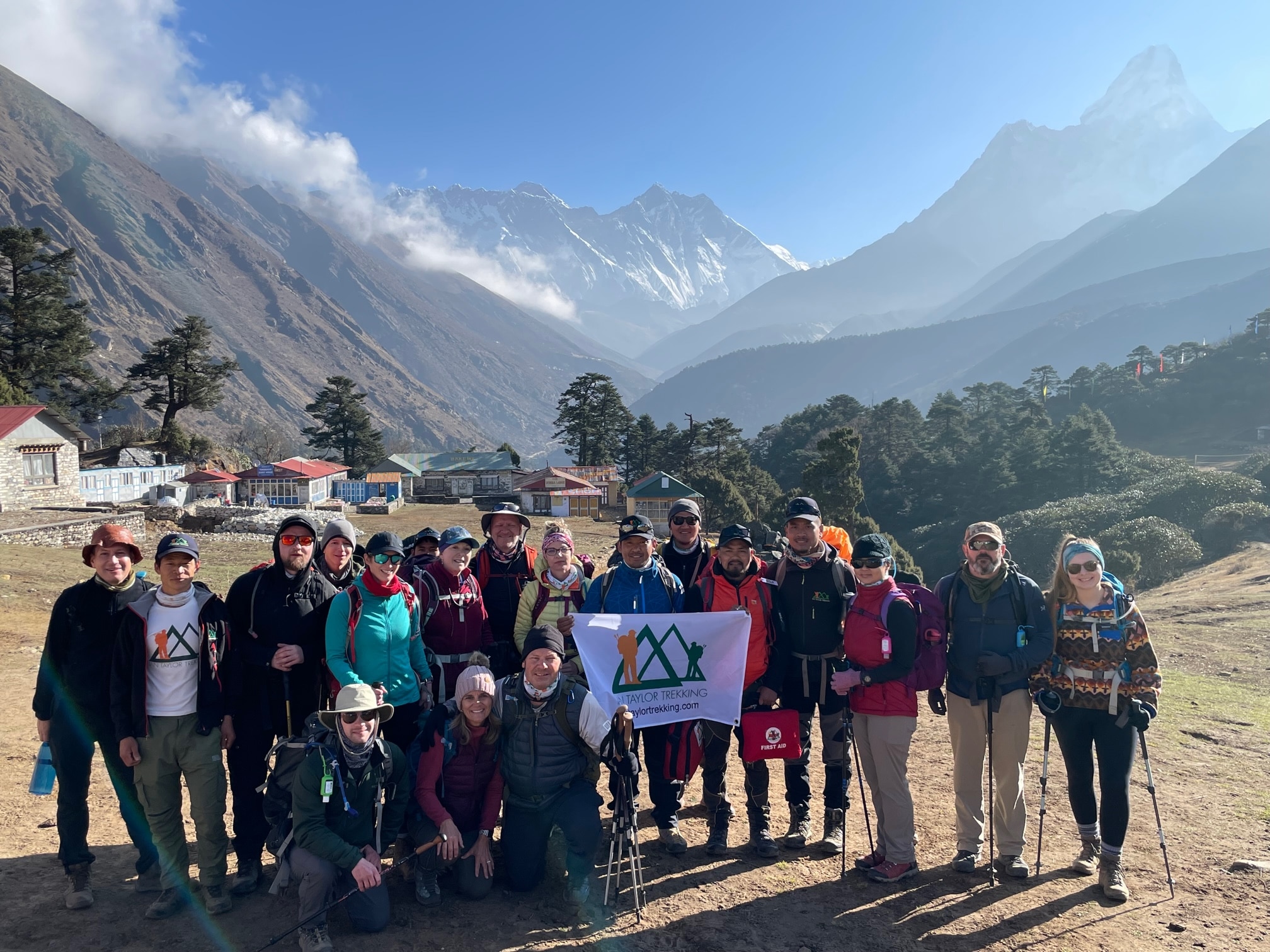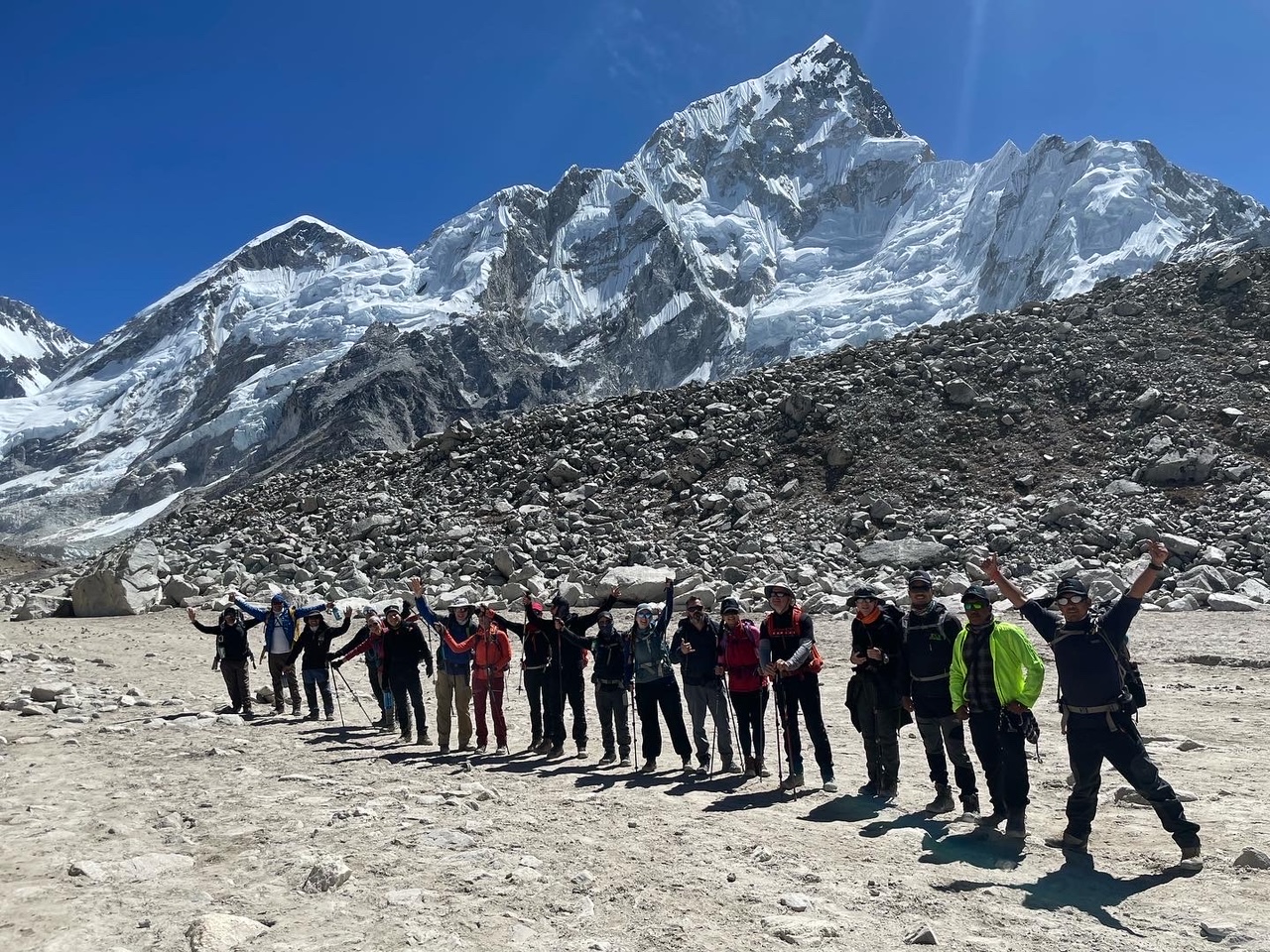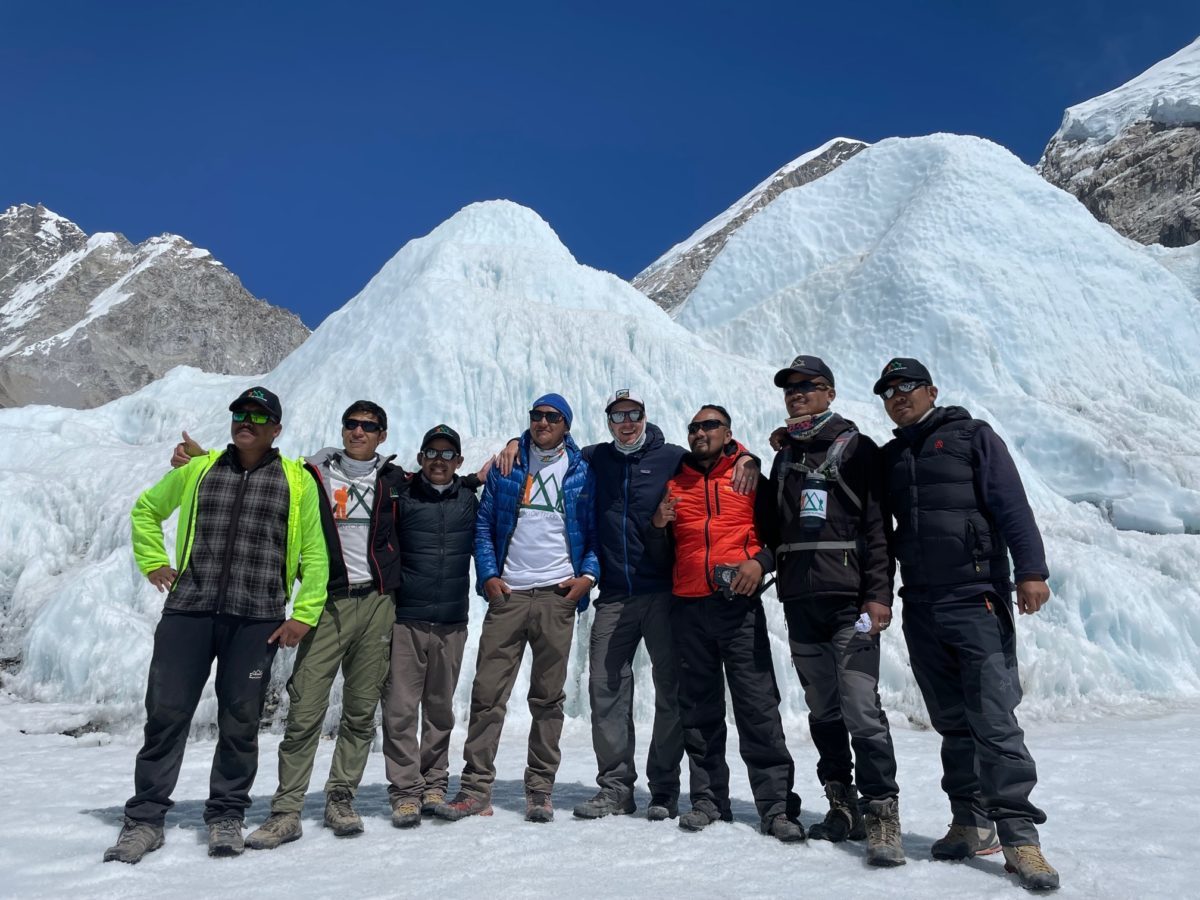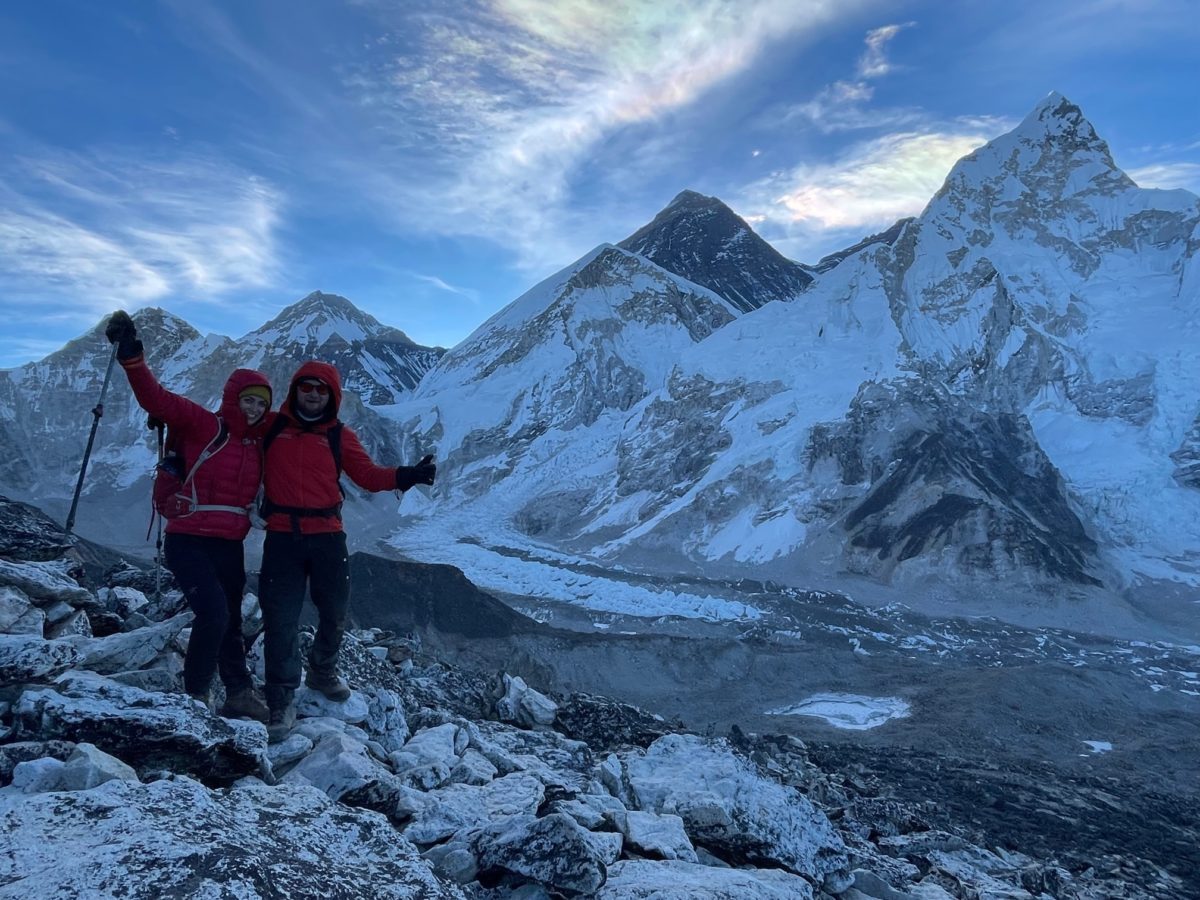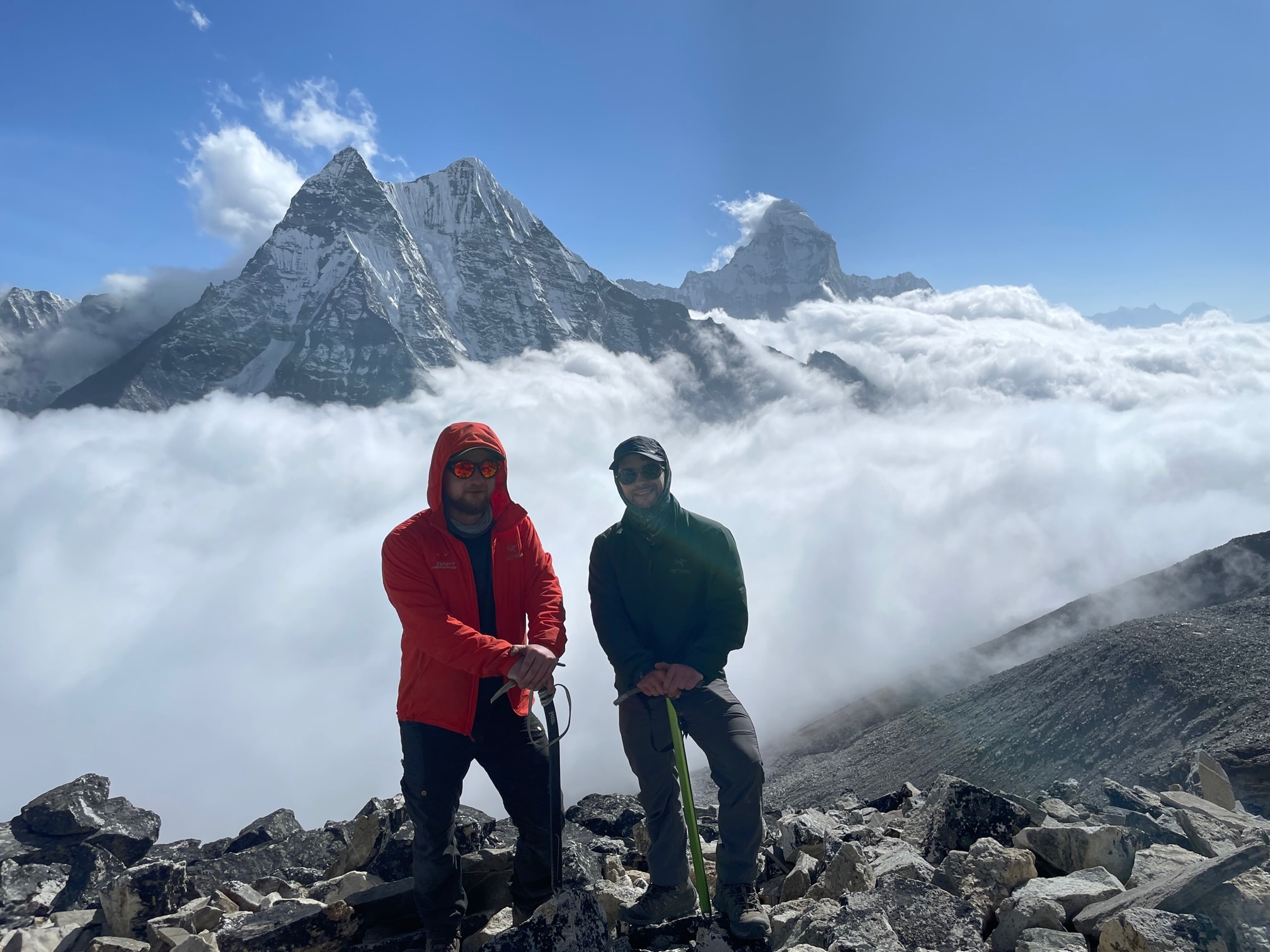Here are the key items needed for trekking trips. Of course, what gear you need to bring on any given trekking adventure is not a one size fits all situation! However, we have come up with a list of recommended gear that will fit most multi-day trekking trips.
Items Will Vary Depending on the Trip
Factors like climate, temperatures, terrain and location will all contribute to what you would bring on any given trip, however this should be a good outline of gear needed when on a trekking adventure!
Key Items Needed for Trekking Trips in our Dossiers
Once you sign up to an Ian Taylor Trekking trip, we will then send you a Dossier on the trip. This will include all of the gear that we recommend for your chosen adventure. If you have any questions on gear, then please feel free to GET IN TOUCH with us!
Watch all our Packing Videos
Above is our Kilimanjaro packing video. These are the items that Ian Taylor will bring with him on an 8 day trip up Kilimanjaro. When you have reviewed the video and list come back here and check out these important pages. Click here for Kilimanjaro training advice, Click here for our Top 10 Tips for climbing Kilimanjaro. Or better still CONTACT US and let’s chat. READ SOME REVIEWS.
1). Down Jacket
Having a down jacket with you at all times is vital. Depending on the trip, you will need a quality down jacket, with more or less down. The fill 600 or 800 fill down is just the quality of the down. Ask us for advice on getting the correct down jacket for your adventure. Used on an off the mountain, this is a vital piece of any kit. Likewise, this will be used on all our adventures. There are different graded of down jackets but any 100% ethically sourced goose down jacket is a vital piece of kit for any adventure. We can help you pick the right jacket for you.
2). Trekking Boots
Having a comfortable, warm, water proof and broken in pair of trekking boots is so important on any adventure. Looking after your feet and keeping them warm and comfortable can mean the difference between success and failure. We have used Scarpa, Merrell, Berghaus and Mammut Trekking boots. I am currently using the La Sportiva Trango GTX trekking boots. Your feet are what carry you through your trek. You will walk for 4 to 16+ days. Your trekking boots need to be water proof, quality leather or other water proof boots. The more rigid the sole the better in my opinion. You also need to break them in and being out hiking in them a lot prior to your trek. We can help you pick the right boots for you.
3). Gloves
At high altitude and in cold weather conditions, the body moves towards survival mode and blood flow is moved to keep the brain, lungs, heart working and pulls blood flow from the extremities. Keeping your hands warm is also vital in making sure you have a comfortable and enjoyable adventure. Also having liner gloves helps when taking your hands out of gloves to take pictures and keep your hands warm at all times.
4). Thermal Layers
We are big fans of Merino wool base layers using the same layers on 30 different expeditions. We recommend a mix of short sleeve and long sleeve Icebreaker 200/260 grade. They can be used for sleeping in, night climbing and the first layer in my layering system in keeping my body warm and keeping cold conditions at high altitude at bay.
5). Buff
One of the most important pieces of clothing on Everest and other high and cold mountains was my fleece lined buff. A buff keeps your neck and back of your head warm. Most importantly it was used it to cover my mouth. At high altitude the air is cold and dry, if you can keep moisture in your mouth you are less likely to be coughing, and damaging your throat and lungs. You are also retaining moisture in your body which helps keep you better hydrated at altitude.
This exhaustive list does not have to be followed word for word. We appreciate that trekkers have their own preference regarding clothing, but we hope this list will ensure nothing is overlooked.
Key Items Needed for Upper Body
T-Shirts: We recommend Merino wool or synthetic fabrics (NO COTTON) 2 short sleeve shirts and 2 long sleeve shirts. (Merino is best)
Base Layers: Merino Wool Base layers are recommended, however a synthetic material will work as well. You will want one pair of warm bottoms to wear under your trekking pants on the final days of the trek. We would also recommend one or two more long sleeve Merino/synthetic tops. These will have ‘wicking’ properties to keep you warm when you are cold and cool when you are warm.
Mid Layers: This is going to be your warm, insulating layer. This can range from Merino Wool 200+ weight, to fleeces, to light down or synthetic jackets. You will need just one or two of these layers as they do not touch your body.
Outer Layer: Heavy down jacket. You will wear this every night and morning and you will want to have a high quality 700 or 800 fill goose down jacket. This is an essential piece of your kit to keep you warm in the freezing temperatures.
Waterproof Jacket: You need a Gore-tex or similar waterproofing material in an outer wear jacket. This should be light weight and will help protect you from rain/snow as well as help block the wind. Must have a hood.
Gloves: You will need one pair of warm, waterproof outer gloves plus one pair of smaller liner gloves. The warmer gloves need to be a warm glove, similar to what you would wear to ski in. These are essential to keep you warm in the freezing temperatures. You will also want a thin liner glove to the less frigid temperatures or to wear inside your thick outer gloves for extreme temps.
Head Gear
Sun Hat: The hat needs to have a brim all the way around it to cover your ears, neck and face from the strong rays of the sun. You will rely on this to keep you from burning and dehydrating, which could potentially ruin your trip.
Winter Hat: You will need a warm fleece or wool hat to keep you warm in the cold temperatures. You will wear this every night/morning.
Buff/Neck Gaiter: This is an essential piece of gear to keep your neck warm as well as to cover your mouth and keep in the moisture high up.
Sunglasses: You need a dark, wraparound pair of sunglasses. Preferably category 3 or 4, in order to protect your eyes against harsh UV rays and ice-glare at higher altitudes. It is recommended to have a spare pair as well.
Head Torch: Essential for mornings/evenings in the lodges as well as night hiking and if you are staying in a tent.
Key Items Needed for Lower Body
Shorts: (light weight) good for hiking while at lower elevations. Nylon or synthetic fabrics are best and you will only need one pair.
Trekking Pants: We recommend bringing one or two pairs of trekking pants that are quick drying, synthetic material. Also, the type that can be zipped off into shorts can be helpful.
Fleece Pant: Every night when you arrive at your lodging, you will want to change your clothes from your trekking clothes. We recommend a pair of warm fleece pants or a track suit pant. You will only need one pair.
Waterproof Pant: You will need to have one pair of waterproof pants that can be worn over your trekking pant in case of rain/heavy snow. These can be Gore-tex or similar waterproofing materials.
Socks: We recommend either Merino Wool or a synthetic material (again not cotton) as they will help to keep your feet dry and comfortable. Usually you will need 3 or 4 pairs of thinner socks and 2 or 3 pairs of thicker socks.
Hiking Boots: You will want to purchase these early and break them in (do not go on the trip with a never been worn pair of boots). They ideally will be leather and must be waterproof.
Lightweight Shoes: You will want to take your boots off when you arrive at your destination each night. We recommend a light trail running shoe or trainer (Salomon Brand are ideal).
Important Items for Trekking Adventures
Day Pack Backpack: Approximately a 35 liter pack, for you to carry each day with your daily items/personal documents/camera/money. This must have a hip belt for support/weight loading and also should have an inner frame for comfort on your back.
Backpack Splash Cover: In the case of heavy rains, this cover can go on your backpack to keep the contents of your pack dry. If you are carrying your camera/important documents in your pack, you may want to bring this, however it is optional.
Duffel Bag/Kit Bag for Yaks/porters: We recommend a duffel bag around 100 liters in size. This ideally will be a water resistant material (ie. North Face Base Camp Duffel or Patagonia Black Hole Duffels).
Sleeping Bag: Having a good, down filled sleeping bag is essential for any trekking adventure. We recommend that it is rated to -15°C (0°F) as a good option, however, this depends on where you are traveling. You can also bring a liner sheet for your sleeping bag if you know that you run cold.
Thermarest: This self-inflating mattress is not needed unless you are on a sleeping at base camp trek, however if you feel that you will not sleep without it, it can be included.
Sunscreen: We recommend having a Factor 35+ to protect you from the extreme rays at altitude.
Hydration Systems
Water Bottles: We recommend having two Nalgene or similar bottles. These are a thick plastic bottle that you can fill with boiling water at night to act as a hot water bottle and then drink when you wake in the morning. You will not be able to do this with metal bottles.
Camelbak: This hands-free hydration system is essential to keep you drinking plenty of water on the trail. We recommend a 2 or 3 liter bladder that you can fill each morning before hitting the trail so that you can easily sip water all day without having to stop walking.
Water Purification Tablets: Purification tablets to purify the water along the trail. You will need to purify any cold water that you get along the trail, unless otherwise mentioned. You do not want to pick up a water borne illness on a trek, therefore you should always have these with you.
Personal Hygiene and Health
Vitamins/Powdered Drink: Sometimes the water can get boring to drink, so we recommend bringing some vitamin C or multivitamin tablets/powders to add to your water.
Towel: A small sports towel that is quick drying is recommended.
Baby Wipes: While there are options to shower along the trail, we recommend always bringing a pack of Baby Wipes to keep yourself clean in the wilderness.
Hand Sanitizer: This is essential to keep your hands clean on the trail.
Lip Balm/Zinc Cream: This is essential to protect you against the fierce sun, especially at high altitude.
Toilet Paper & Matches: This is for when you are on the trail and have to go to the bathroom. You will either carefully burn the toilet paper or take a small plastic bag to dispose of toilet paper when you arrive at the lodge.
Personal Toiletries: Everything you need on a daily basis (contact lenses, glasses, toothbrush, toothpaste, feminine products, etc.)
More Important Items Needed for Your Trip
Spare Batteries: This is for your head torch and your camera. The cold weather tends to shorten the life of batteries. Likewise, a solar charger is an excellent solution to this problem.
Pocket knife/Multi Tool: Although this is not essential, it is always handy!
Trekking Poles: Adjustable poles are always ideal.
Gaiters: These are optional, however these can stop scree/mud/snow from getting into your boots.
Trail Munchies: Bring a few of your favorites: chocolates, nuts, sweets, etc. Likewise, you can purchase some of these items on arrival at your destination!
Garbage Bag: This is a great way to wrap all your clothes/items inside your kit-bag, in order to protect it against rain.
Additional Items to Consider
Small Mirror: Not essential, but some people like to have one if they are on a camping trip.
Book/Diary: You may want to have a book or diary or cards to use in the evenings or when you have down-time.
Camera: You will want to have plenty of memory cards/film and spare batteries. The lodges do have the option to charge along the way but it does get expensive.
Cash: It is best to have USD for tips at the end of the trek. You will also want to have some spare cash for any extras you may need on the trail, such as drinks, snacks, etc. You will also want extra spending money for items like drinks, souvenirs, food. The amount you bring will depend on how much you plan on buying/spending. We usually recommend at least $500.
Medical Adventure Equipment
You should always have a small Personal First Aid Kit with you. This is just a guide of what we recommend you to bring, however, you may have other personal items you need to add to your kit.
1). Painkillers. Paracetamol, Ibuprofen (proven medication at altitude), Aspirin, Disprin.
2.) Antibiotics. Two courses as prescribed by your own GP. One for chest and upper respiratory tract infections and one for abdominal, bowel infections.
3). Cough Lozenges.
4). Wound Dressing. One should be sufficient.
5). Triangular Bandage. One should be sufficient.
6). Melolin Dressings. Four 10 cm by 10 cm
7). Band-aid/Plasters. An assortment package of these.
8). Antiseptic Cream. One small tube.
9). Diarrhea Treatment.
10). Insect Repellent. One small bottle of 50% DEET repellent.
11). Foot Powder. Important for keeping feet in good condition.
12). Anti-inflammatory Tablets. To bring down any inflammation.
13). Antihistamine Tablets.
14). Diamox. For altitude sickness.
Your Personal Medical Needs
*There will be a group medical kit on all of our adventures that will contain more of the above plus extensive supplies for a wide range of medical problems and emergencies. However, you will need to make sure you have the items above, and keep your personal medical kit with you daily on the trail.
Speak to the Experts
We hope that you have found this overview of what gear you need for a trekking adventure helpful! However, keep in mind that this is not a one size fits all system. Each trip we run requires different gear, but, this is a good starting point of gear that we recommend.
We are available 5 days a week when we are not on trips and happy to go through the kit list individually to our clients, in order to make sure you have the right items for your chosen adventure.

